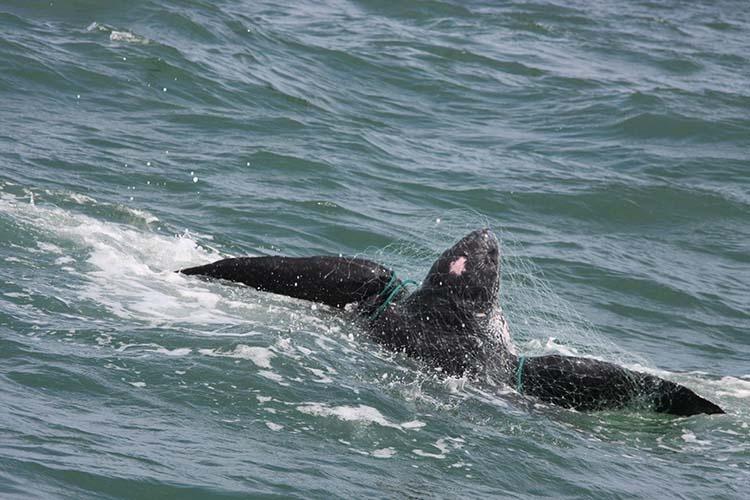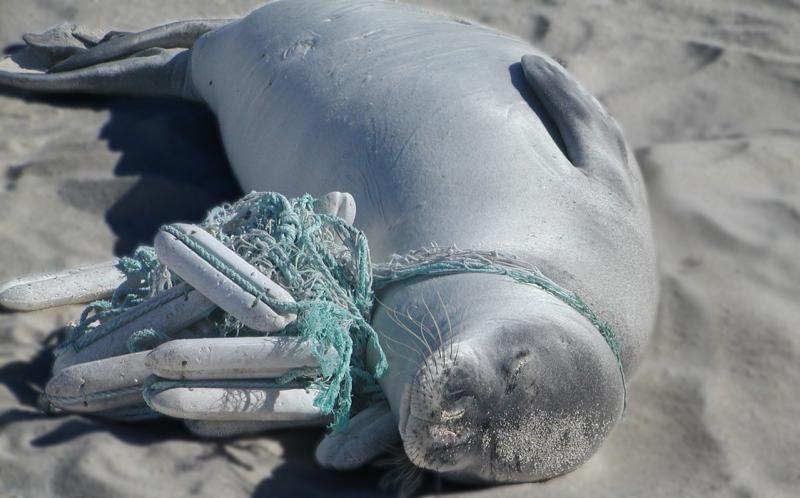Sea turtles can become accidentally entangled in active or discarded fixed fishing gear and other materials. These entanglements may prevent the recovery of endangered and threatened sea turtle populations. In response to high numbers of leatherback sea turtles found entangled in the vertical lines of fixed gear in the Northeast Region, the NOAA Fisheries Service Northeast Region established the Northeast Atlantic Coast Sea Turtle Disentanglement Network (STDN). Formally established in 2002, the STDN is an important component of the National Sea Turtle Stranding and Salvage Network. The STDN works to reduce serious injuries and mortalities caused by entanglements.
What To Do If You Encounter An Entangled Sea Turtle
Call for emergency response immediately and visually monitor the animal from a distance until you speak with a responder, or they arrive on scene:
Who to Call:
- NOAA Fisheries Northeast Region Stranding Hotline at (866) 755-NOAA (6622)
- Call the US Coast Guard on VHF Ch. 16
- In Massachusetts - Provincetown Center for Coastal Studies at (800) 900-3622
- In all other states - Contact your local Stranding Network
What You Can Do To Help
Information You Can Provide To The Emergency Responders

When you see an entangled turtle, first disengage your engine and observe the animal from a distance. Collect the following information and relay the details to the emergency responders (phone numbers listed above).
- Is animal moving, swimming or diving?
- How and where is the turtle entangled: its flippers, head, or shell?
- How many times is the line wrapped around the turtle?
- Is there a buoy visible? What color is it? Is there an ID number visible?
- If you have a camera on board, take photos of the turtle and the entangling gear. Please provide the photos to the responders, if requested.
Safety Tips
- Do not attempt to disentangle or capture the turtle.
- Do not cut the anchoring line and release the turtle with gear still on it.
- Do not get in the water with the turtle.
- Call for assistance (phone numbers above) and remain on scene until you speak with a responder.
More Information About Sea Turtles in the Greater Atlantic




